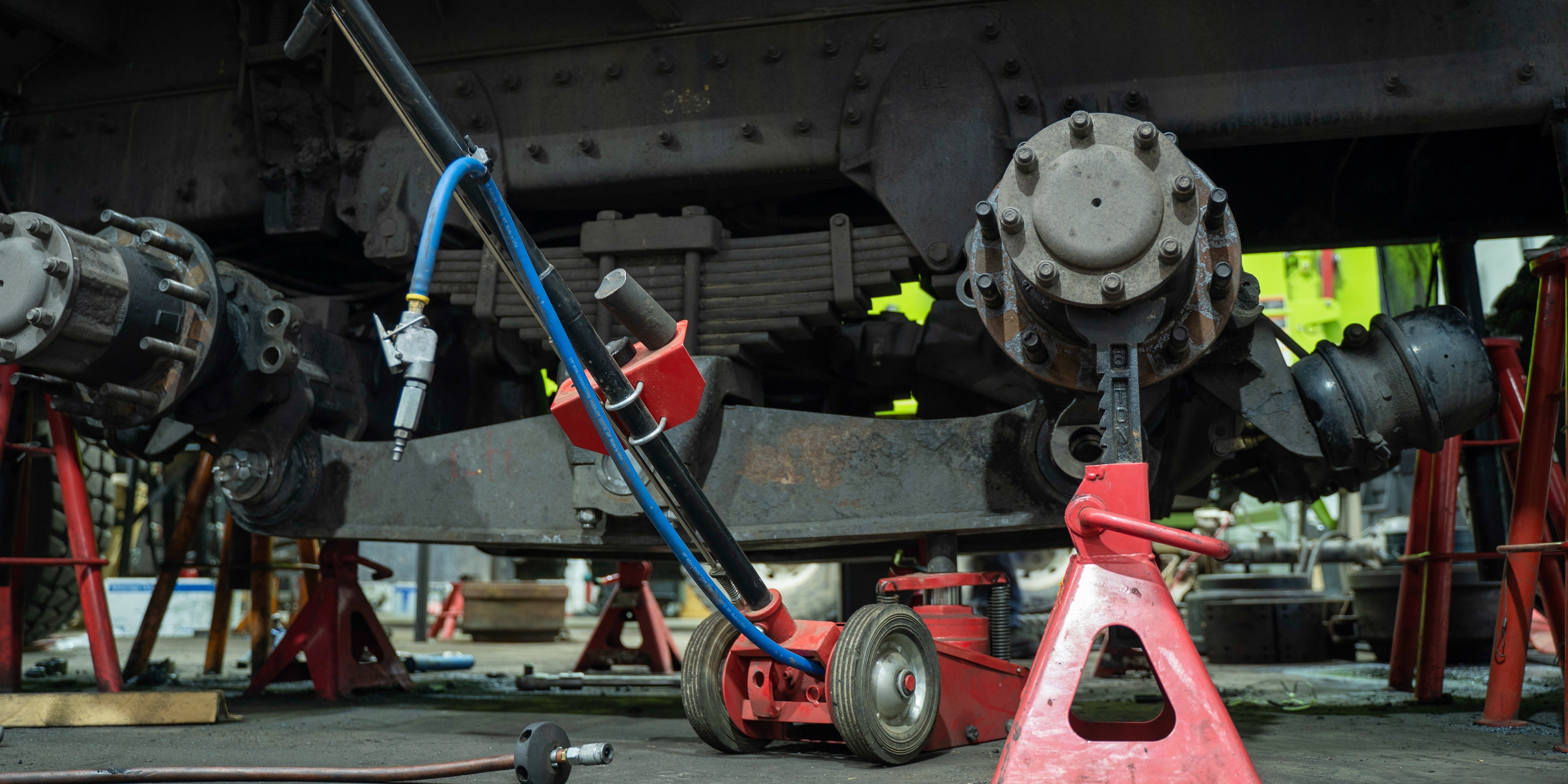For independent and mid-sized heavy-duty mechanic shops, safety isn’t just a legal obligation - it’s a business strategy. While the shop floor runs on hard work and hustle, one injury can wipe out months of profit. Investing in safety can seem like a “nice to have” in a fast-paced environment, but the numbers tell a different story: every dollar spent on safety pays back in real, measurable financial returns.
The Hidden and High Cost of Workplace Injuries
The average workers’ comp claim in the U.S. costs around $44,000. That figure doesn’t even include indirect costs - the overtime to cover an injured tech’s shift, delays in service, temporary hires, administrative time, and potential OSHA penalties. In 2022 alone, workplace injuries cost U.S. businesses an estimated $167 billion - about $1,040 per worker.
Even relatively minor incidents can create a chain reaction of lost productivity. A mechanic sidelined with a strained shoulder may be out for six weeks or longer, stuck on light duty, while his bay sits underutilized. If that tech also operates a mobile service truck, that truck becomes a sunk cost, parked while jobs pile up. Other team members are left to pick up the slack, potentially burning out or making mistakes under pressure. If OSHA gets involved, a single serious violation can lead to fines of $16,000 or more - with repeat offenses triggering six-figure penalties.
The bottom line is simple: an injury isn’t a one-time expense. It’s a drain on revenue, efficiency, and team morale.
Safety Spending Delivers Real ROI
Safety isn’t just about compliance - it’s an investment with a proven return. Multiple studies show that for every $1 spent on safety improvements, businesses see approximately $4 to $6 in return. These returns come from avoiding medical claims, minimizing lost time, reducing insurance premiums, and staying on schedule with jobs.
A simple illustration shows the math clearly. A wrist injury from repetitive wrenching can cost around $26,000 in workers’ comp. A wrist brace? About $10. A serious laceration requiring surgery may result in $30,000 in costs. A pair of cut-resistant gloves might cost $15. A fall from a ladder could total $60,000 in bills. The cost of a proper harness and safety training? Around $300.
These small, preventative expenses consistently deliver outsized returns. In shops that operate on tight margins, just one avoided injury can justify an entire year’s worth of safety investment.
Real-World Case Studies: Safety That Pays for Itself
A national repair chain implemented a system-wide safety program that included new training protocols and upgraded personal protective equipment. Within one year, employee injuries dropped by 50 percent. This translated to 500 fewer injuries and over $9 million saved in direct costs - a 40 percent reduction in cost per incident.
Smaller shops have seen equally impressive ROI at scale. A mid-sized fleet maintenance operation suffering frequent back injuries purchased hydraulic lift tables and reinforced safe lifting training. The cost of the equipment was recouped within the year thanks to avoided claims and lost time, with an estimated $100,000 saved in one year alone.
In another example, a shop manager spent $10 on a wrist brace for a tech showing early signs of strain. That simple move may have prevented a $26,000 injury - and helped retain a skilled mechanic. These are not hypotheticals. They’re everyday examples of how strategic safety investments create bottom-line savings.
Insurance Premiums and Safety Performance
One often-overlooked financial benefit of a strong safety program is insurance cost reduction. Fewer claims mean lower workers’ comp modification rates and better general liability terms. Some shop owners have seen their comp premiums drop by 10 percent or more after achieving a year or two of reduced injuries. In smaller operations, that can equate to thousands of dollars annually.
Additionally, a solid safety record helps avoid costly OSHA citations and makes your business more attractive to insurers and large fleet customers. Contractors and fleet managers increasingly ask about safety programs and incident rates as part of vendor qualification. Investing in safety strengthens your position in the market.
Productivity, Morale, and Retention
The benefits of a strong safety culture extend beyond dollars and cents. Shops that prioritize safety report higher productivity and employee satisfaction. Technicians who feel valued - who know management is committed to keeping them safe - are more likely to stay focused, work efficiently, and remain with the company longer.
A safety-first shop also runs more smoothly. Rather than worrying about getting hurt, technicians focus on quality workmanship. They’re more likely to speak up when something looks unsafe, assist one another with heavy lifts, and follow procedures that prevent downtime or rework. This creates a positive loop: fewer injuries, better morale, better work, and less turnover.
Shops with active safety programs have been shown to see up to a 43 percent boost in productivity and as much as a 28 percent overall reduction in operating costs. That’s a significant margin improvement driven purely by better safety practices.
The Essentials: Training, PPE, and Ergonomics
The foundation of any effective safety program includes three key components: consistent training, high-quality PPE, and ergonomic support.
Training: Regular, documented training ensures that employees understand risks and how to avoid them. This includes OSHA 10- or 30-hour courses, hazard communication, lockout/tagout procedures, lifting technique, and proper tool use. In-house safety talks and refreshers are equally important for reinforcing best practices and discussing near-misses.
PPE: Quality personal protective equipment doesn’t have to be expensive, but it should be functional and comfortable. Eye protection, gloves, hearing protection, and respirators are basic essentials. PPE that fits well and suits the work environment is more likely to be used consistently.
Ergonomics: Back strains are among the most expensive and preventable injuries. Invest in vehicle lifts, hoists, and lift-assist tools to reduce manual lifting. Anti-fatigue mats, adjustable workstations, and long-handled or power tools help reduce physical strain during long shifts. Simple fixes, like storing heavy parts at waist height and enforcing team lift policies, go a long way in reducing injury risk.
Leveraging Technology for Safer Shops
Today’s shop management and safety systems can do more than track work orders. Platforms like ShopView and others allow shop owners to schedule and log safety inspections, track technician training, manage incidents, and generate compliance reports with minimal effort.
Digital inspection checklists, mobile field service apps, and telematics integrations can close the loop between drivers, technicians, and managers. Pre-trip inspection defects logged by a driver can alert the shop before a breakdown occurs. Software tools can automatically flag training renewals, equipment inspections, or compliance gaps - preventing violations before they occur.
Technology also plays a key role in accountability. Time-stamped mobile checklists, photo documentation, and digital DVIRs ensure that field techs follow protocols, no matter where they’re working. These systems reduce liability, ensure faster response times, and ultimately, lead to safer and more efficient operations.
Safety Pays: Final Takeaways
Change is never easy - especially when your business has been running a certain way for years. But the heavy-duty repair world is evolving, and ShopView is built to help shops like yours stay ahead. Whether you're running a single-location diesel garage or scaling across multiple bays and teams, ShopView gives you the tools to simplify, streamline, and succeed.
We built ShopView specifically for independent and mid-sized heavy-duty repair operations - not generic auto repair, not corporate dealerships. Real tools, for real shops, solving real problems.
- Intuitive tech built for mechanics, not just managers
- Real-time bay tracking, inspections, inventory, and work orders
- No long contracts, expensive hardware, or complex installs
- Onboarding that won’t disrupt your workflow
So if you’ve been on the fence about going digital, let us show you how painless and profitable it can be. Book a free demo of ShopView today, and see how modern shop management software actually works - in the hands of people who get it, because we’ve been there too.
👉 Start your demo at ShopView.com
The old way may still work - but with ShopView, the better way is already here.







